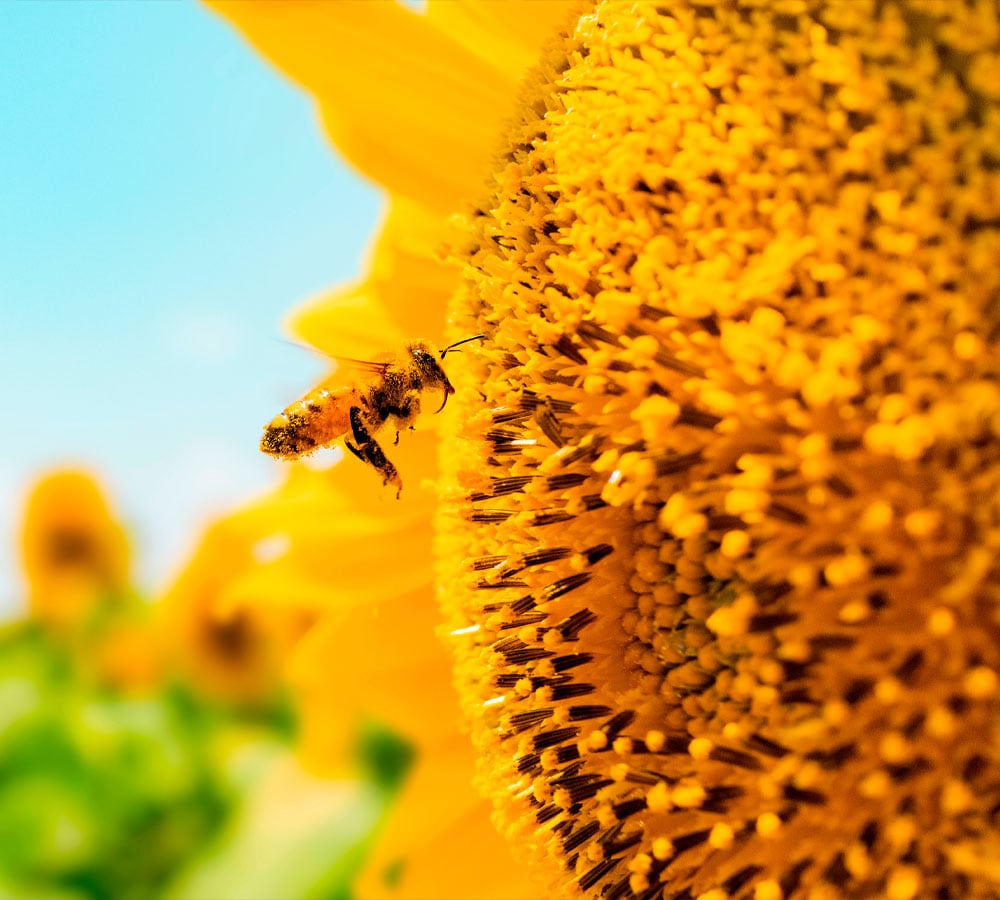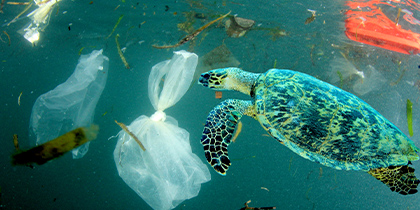Plastic waste is a global problem. Every minute, some 15,000 to 30,000 kilos of plastic end up in the sea.
Plastic Free July is a time to think about the impact of plastic and what we can do to reduce its use. In this blog we zoom in on one of the most visible consequences: the plastic soup. What is it exactly? What can you - as an individual or as an organization - do to reduce the plastics soup? And what role does behavioral change play in it?
The plastics soup: definition
Plastics soup refers to large concentrations of plastic waste floating in the oceans. It includes both visible plastic, such as bottles, plastic bags, packaging and fishing nets, and microplastics: tiny particles created by the breakdown of larger pieces of plastic.
But there's more: all plastic within 50 kilometers of the coast also falls under this heading. For the Netherlands, this means that not only the North Sea coast but also, for example, a large part of the Rijnmond region and Amsterdam are included. So the definition of the plastics soup is broader than people think.
How does the plastics soup arise?
The plastics soup arises because litter such as plastic bottles, food packaging and plastic bags ends up in rivers under the influence of man, weather and wind. These rivers carry the waste to the sea, where it is carried by sea currents.
Some of this stays close to shore, but a large concentration of plastic accumulates mainly in five areas in the oceans where currents converge. These currents spin around there in large circles, carrying the plastic and keeping it floating together. The point where these currents converge are also called gyres. You can think of it as a kind of vortex that holds the waste.
Where does the plastic soup float?
The largest plastic soup is in the North Pacific Ocean- between Hawaii and California. This floating plastic collection is estimated to be three times the size of France. An estimated1990 billion pieces of plastic float here.
Other large plastic soups are located in:
- The South Pacific Ocean(491 billion pieces of plastic);
- The North Atlantic Ocean(930 billion pieces of plastic),
- the South Atlantic Ocean(297 billion pieces of plastic),
- and the Indian Ocean(1,300 billion pieces of plastic).
Is there also a plastic soup in the Mediterranean Sea?
Although the Mediterranean Sea is not an ocean gyre-an area where ocean currents converge-it is often referred to as the sixth largest plastic collection zone. In total, there are an estimated 247 billion pieces of plastic floating in this relatively small sea.
A major cause is the semi-enclosed nature of the Mediterranean Sea. Because there is little water exchange with other seas, plastic entering through rivers continues to float for long periods of time. As a result, plastic concentrations in some parts of the Mediterranean Sea are similar to those found in major plastics soups.
What are the consequences of the plastics soup?
The plastics soup affects animals, ecosystems and the food chain.
- Animals: Seabirds, fish and turtles mistake plastic for food or become entangled in it. This leads to injuries and suffocation.
- Food chain: Microplastics pose a risk to the food chain. These tiny particles are taken up by plankton, which are at the base of the food chain. Fish eat the plankton, seabirds eat the fish, etc. Research shows thatmicroplastics have been found inmussels, shrimp and even in drinking water andhuman feces.
- Ecosystems: Plastic damages coral reefs. These play an important role within the marine ecosystem. They provide habitat for about a quarter of all marine species, protect coastal areas from erosion, storms, and contribute to CO2 storage- similar to the function of trees on land.

What legislation is in place regarding plastics and packaging?
Legislation and regulations have been introduced in the Netherlands, Belgium and worldwide. These mainly involve reducing plastic use and preventing plastic litter. We list the most important ones:
SUP Directive (Single Use Plastics).
This European directive applies to disposable plastics such as straws, plates, cutlery, cotton buds and Styrofoam packaging. The aim is to reduce the impact of disposable plastics on the environment.To learn more, read on.
Deposits on plastic bottles and cans.
Deposits offer a financial incentive to reduce plastic packaging. The goal? Preventing litter. In the Netherlands, you can return plastic bottles since 2021-and cans since 2023. In Flanders, plastic waste cannot yet be collected for deposit money.
Extended Producer Responsibility (UPV).
The UPV requires producers to take responsibility for the full life cycle of their products - from production to collection and recycling. This scheme encourages more sustainable production processes and helps to reduce environmental impact. To learn more,read on.
What can you - as an individual or an organization - do to reduce the plastic soup?
The plastics soup may seem like a problem over which you have little influence. Yet you can contribute to reducing litter with your daily choices. For example:
- Using less plastic packaging
- Bring your own bag for groceries
- Drinking water from a reusable bottle
- Collecting plastic waste for recycling
- Clean up litter when you find it
Preventing plastic litter? It starts with behavioral change
A lot of (plastic) litter ends up in the environment because the waste is not thrown away in the right place - often because people don't really know where it belongs. That awareness is the first step toward changing behavior - and exactly what is needed to prevent litter from becoming litter in the first place.
Behavioral change in practice
To investigate how behavior around waste separation can be influenced, we talked to a group of students. They were given a bag of mixed waste and tested three different setups with collection tools.
As they made choices, we observed behavior: where did separating go with ease? What role did the type of bin play? Striking: Although only 20% of the youth described themselves as conscious and purposeful about waste separation, almost everyone made a serious effort to separate waste correctly. This shows: proper waste separation behavior can be encouraged.
Stayinginformed
Stay up to date with all the new developments? Follow us onLinkedIn, listen to the podcast "Resource to Think" or subscribe to the newsletter. Are you curious about what Milgro can do for your operations and waste process? Then get in touch.















